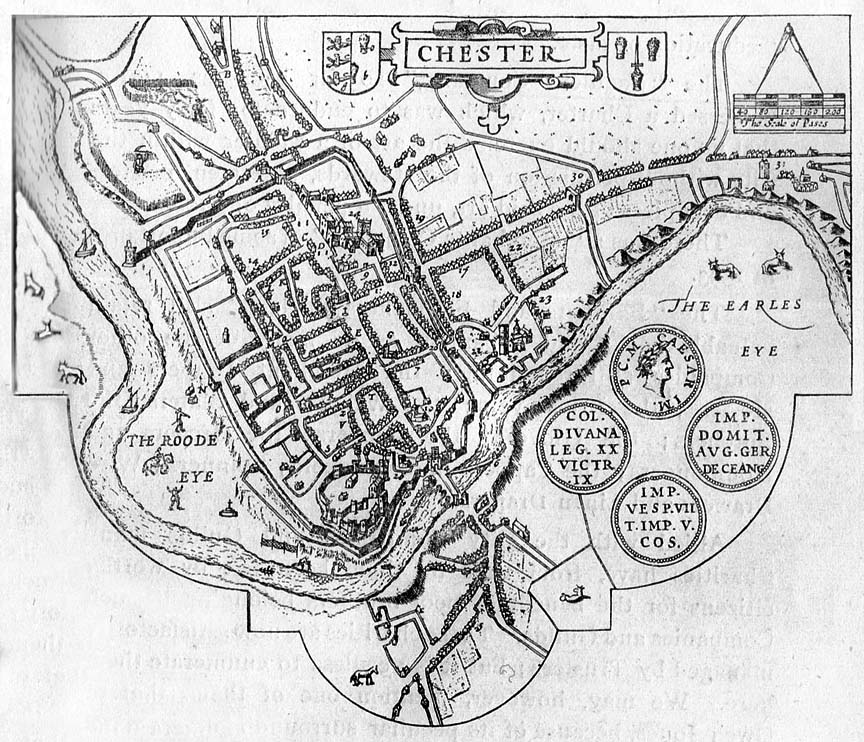The
Black & White
Picture
Place
Old Maps and Aerial Photographs of Chester

John
Speed's
Map
of
Chester
1610
| This
map
was
drawn
a
mere
forty
years
after
that
of
Braun,
and
is
a
much
less
elaborate
affair.
It
is
nevertheless
probably
the
best
known
of
the
early
maps
of
Chester.
It
was
originally
a
vignette
in
Speed's
Maps
of
Cheshire,
but
was
reprinted
in
its
own
right
at
least
fourteen
times
between
1616
and
1770.
As in the Braun map, the gallows continue to stand above the Earl's Eye (The Meadows) in Boughton (on the right hand side). John Speed was born at Farndon near Chester, but spent most of his life in London working as a tailor. His extraordinary historical learning eventually brought him to the attention of Sir Fulke Grenville and Sir Henry Spellman and enable him to publish his series of maps of England and Wales under the title of the Theatre of the Empire of Great Britain. He died at the age of 87 in 1629. Go here to read more of John Speed's impressions of Chester and here to learn about his life and times. |
On to Daniel Meisner's View of Chester 1620
Site
Front
Door
|
Chester
Walls
Stroll
Introduction
|
Old
Maps
&
Aerial
Photographs
|
Site
Index